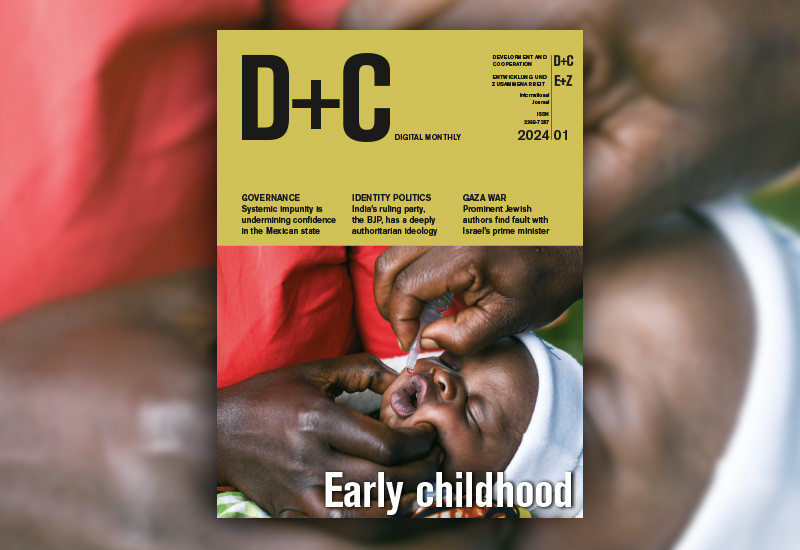Nutrition
Boys face undernutrition too

“Zero hunger” is the 2nd UN Sustainable Development Goal. It aims to end hunger and achieve food security as well as improved nutrition. Gender aspects are often emphasised in research on nutrition. Major German non-governmental organisations (NGO) stress that women are particularly affected by hunger and malnutrition. World Food Program USA reckons that nearly 60 % of the 345 million people who are severely hungry worldwide are women and girls. Moreover, the UN Food and Agriculture Organization (FAO) recently reported a higher global rate of food insecurity for women than for men (FAO et al., 2022).
While it is doubtlessly important to pursue the goal of ensuring that no girl and woman is malnourished, boys and men should not be forgotten too. This is important for a number of reasons. Firstly, attributing gender aspects to malnutrition is not an easy task. In many surveys, data collection is restricted to children under five years and women in childbearing age, while the nutritional status of boys and men in countries with food insecurity is often not documented.
Secondly, data show that males are by no means better off than females everywhere in the world. This calls for a more differentiated picture. For example, according to the FAO report quoted above, boys under five years were more affected by stunting than girls in most regions. Moreover, in perinatal medicine and paediatrics, it is well known that child mortality – the share of children who die before they are five years old – is generally significantly higher for boys than for girls.
Boys affected by thinness
The Global Nutrition Report (GNR) 2021 is a multi-stakeholder initiative of, among others, governments, civil-society organisations and experts in nutrition. It states that globally, in 2019, 10.9 % of boys between five and nine years of age suffered from thinness, compared to 8.9 % of girls at that age. At the age group from 10 to 19 years, the figures are 12.3 % for males and 7.9 % for females. According to the report, the global prevalence of thinness among both children and adolescents has declined modestly since 2010 for boys and girls.
For some countries, the 2020 version of the Global Nutrition Report showed bigger differences of undernutrition prevalence between boys and girls. It stated, for example, that Lesotho has the largest sex gap in childhood and adolescent underweight (boys 32.5 %, girls 14.1 %), followed by Zimbabwe (boys 32.5 %, girls 15.0 %) and DR Congo (boys 37.8 %, girls 21.9 %).
My team at Justus Liebig University Gießen collected data for the German NGO Welthungerhilfe in 2004 that support the observation of women and girls being not generally more often affected by malnutrition than men and boys. In a nutrition baseline survey in the Vavuniya District of Sri Lanka, the prevalence of malnutrition was the same in women and men.
An earlier study addressed the prevalence of malnutrition in Southern Madagascar in 1999/2000. In urban areas, both sexes were affected by food insecurity in 2000, with about 10 % more men being malnourished compared to women.
It is important to note that the intention of this article is not to reduce attention for undernutrition in females. It is more an alert. Boys and men are affected by malnutrition too, in some places even more than girls and women. They also deserve to be taken care of. Therefore, interventions to prevent undernutrition need to be gender-sensitive as a gender imbalance can vary in different regions and age-groups.
Literature
Global Nutrition Report 2021:
https://globalnutritionreport.org/reports/2021-global-nutrition-report/
Global Nutrition Report 2020:
https://globalnutritionreport.org/reports/2020-global-nutrition-report/
FAO et al., 2022: The State of Food Security and Nutrition in the World 2022:
https://www.fao.org/documents/card/en/c/cc0639en
Michael B. Krawinkel is a medical doctor and professor emeritus of human nutrition with focus on nutrition in developing countries at Justus Liebig University Gießen.
michael.krawinkel@uni-giessen.de












